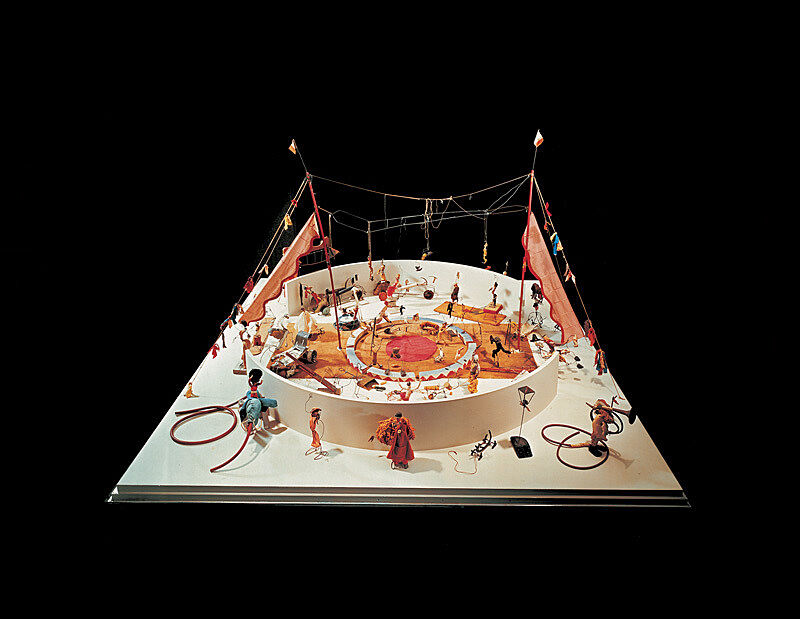
Alexander Calder, Calder’s Circus, 1926–31. Wire, wood, metal, cloth, yarn, paper, cardboard, leather, string, rubber tubing, corks, buttons, rhinestones, pipe cleaners, and bottle caps, 54 × 94 1/4 × 94 1/4 in. (137.2 × 239.4 × 239.4 cm) overall, dimensions variable. Whitney Museum of American Art, New York; purchase with funds from a public fundraising campaign in May 1982. One half the funds were contributed by the Robert Wood Johnson Jr. Charitable Trust. Additional major donations were given by The Lauder Foundation, the Robert Lehman Foundation Inc., the Howard and Jean Lipman Foundation Inc., an anonymous donor, The T. M. Evans Foundation Inc., MacAndrews & Forbes Group Incorporated, the DeWitt Wallace Fund Inc., Martin and Agneta Gruss, Anne Phillips, Mr. and Mrs. Laurance S. Rockefeller, the Simon Foundation Inc., Marylou Whitney, Bankers Trust Company, Mr. and Mrs. Kenneth N. Dayton, Joel and Anne Ehrenkranz, Irvin and Kenneth Feld, Flora Whitney Miller. More than 500 individuals from 26 states and abroad also contributed to the campaign 83.36.1-95
© 2009 Calder Foundation, New York / Artists Rights Society (ARS), New York; photograph © Whitney Museum of American Art.

